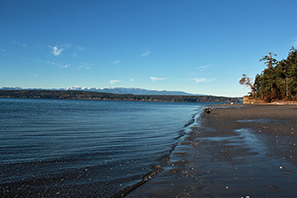 Shellfish, such as oysters, mussels, and clams are filter feeders that subsist by eating tiny particles floating in the water. Bacteria found in the feces of humans and other warm-blooded animals are monitored in recreational and shellfish harvesting areas because they are good indicators that other harmful pathogens may be present. When high bacteria levels are found, beaches are closed to shellfish harvesting and swimming.
Shellfish, such as oysters, mussels, and clams are filter feeders that subsist by eating tiny particles floating in the water. Bacteria found in the feces of humans and other warm-blooded animals are monitored in recreational and shellfish harvesting areas because they are good indicators that other harmful pathogens may be present. When high bacteria levels are found, beaches are closed to shellfish harvesting and swimming.
How to know when water is polluted
Bacterial pollution monitoring is conducted by the Washington Department of Health, the Washington Department of Ecology, and by some counties, tribes, and local municipalities. In a given area the monitoring is often well coordinated and done on a regular basis at various locations. Unfortunately, monitoring is expensive and is often only done on a monthly basis, which may not catch contamination quickly enough to prevent harm. Before you harvest shellfish call the hotline at 1-800-562-5632 to see the status of your beach or visit the Washington Department of Fish and Wildlife website at: wdfw.wa.gov/fishing/shellfish.